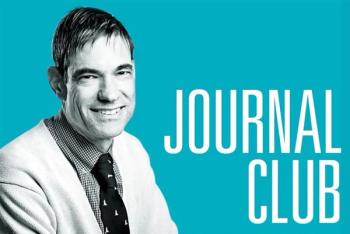
Expert panel warns against post-op opioid use in pediatrics
Non-opioid pain management recommended in pediatrics when possible, according to new guideline.
Opioid misuse is a problem of epidemic proportion across the United States. Although significant efforts have been made in recent years to curb opioid prescribing in adult patients, similar efforts have been lacking in the pediatric population. A new report offers guidelines on how to tackle this problem.
In
Lead author of the report, Lorraine Kelley-Quon, MD, pediatric surgeon at Children’s Hospital Los Angeles in California, said pediatricians should encourage families to ask surgical teams about pain management both before and after any surgeries. They need to know what to expect, and how to treat pain effectively and safely.
“If a pediatrician is concerned about managing pain for a child that just had surgery, he or she should communicate both with the child’s surgical team and the family if there are concerns or questions,” Kelly-Quon said.
Historically, there have been previous guidelines for opioid prescribing in adults following surgery but no guidelines targeting the unique needs of children and families, she added.
Clinicians who care for children after surgery should be aware of the risks of using opioids in this population for pain management, and work to maximize non-opioid pain management strategies and educate families about these options. The expert panel that created the guidelines identified frequent opioid misuse in the adolescent population—especially when non-opioid options were found to be as effective.
In drafting the report, the team reviewed data from 1988 to 2019 and drafted 20 guidelines over a course of a 2-day summit. Misuse of opioids in the adolescent years is associated with opioid abuse problems later in life, as well as other high-risk behaviors. Extra opioids exist most often in a teenager’s home after surgery, the report notes, and new and ongoing use of opioids occurs in about 20% of children after surgery.
Many health care institutions have drafted opioid prescribing guidelines for adults in an effort to stem the ongoing opioid epidemic, yet similar guidance has been lacking for children. In developing this first-ever evidence-based opioid guideline for children, the panel sought to answer the following questions:
- What are the risks of opioid use and possible long-term use of these medications in pediatric populations?
- What are some non-opioid options for pain management?
- What education should be provided to patients and families in regard to pain management after surgery?
The recommendations that were made based on these questions generally center on opioid avoidance in favor of non-opioid pain management, and dedicated education on managing pain for patients and families.
The guideline notes that a significant number of teenagers with access to opioids misuse them, and for many, access begins with a valid prescription. This misuse often is associated with a higher rate of heroin abuse and long-term opioid dependence, the report revealed. Teenagers who receive an opioid prescription have high rates of diverting these medications, as well, and are likely to receive additional opioid prescriptions in the years following initial use.
Clinicians have to be aware of these risks, the panel notes, and work to develop postoperative pain management regiments that control pain and also practice good opioid stewardship. In some cases, opioid-free recovery is feasible, according to the panel. Opioid-free recovery is recommended or possible for the following procedures:
- Inguinal hernia repair
- Umbilical or epigastric hernia repair
- Pyloromyotomy
- Soft tissue excisions
- Pectus bar removal
- Central line placement
- Circumcision
- Meatotomy
- Laparoscopic procedures
- Nuss procedure
- Tonsillectomy or adenoidectomy
- Cochlear implant
- Operative burn debridement
- Orchidoplexy
- Pyeloplasty
- Anterior cruciate ligament repair
- Hip or femoral surgery
If pain management after discharge is needed, non-opioid options should be the first-line choice, the panel recommends.
Ketorolac was one of the most studied opioid alternatives, according to the study, and was shown to be very effective in both perioperative and postoperative pain management. Intravenous acetaminophen is another option offered in the report, as well as dexamethasone. A number of studies cited in the report also suggested that combining some of these alternatives may help as well. Appropriate anesthesia during procedures, including nerve blocks and regional anesthesia, also help to reduce opioid use, the panel suggests.
Two alternatives that weren’t as favored were the use of codeine and tramadol in children aged younger than 18 years. Multiple warnings have been issued about the use of these medications in the pediatric population by the US Food and Drug Administration, particularly in terms of respiratory complications.
In terms of education, the report suggests that frequent education—both perioperatively and post-operatively—about pain and pain management is important for clinicians to offer to both patients and their families. This education should be specific to the situation and diagnosis of the patient, and a consistent message must be repeated throughout the care process from all team members to have the best impact. In this regard, the panel suggests that institutions work to create a consistent message to be shared across locations. When opioids must be prescribed, education should focus on safe storage and disposal of medications, as well as the possibility and seriousness of adverse effects that can occur with opioid use. The panel even recommends that health care centers may want to consider offering opioid disposal resources, as 30% of caregivers admitted to keeping excess opioids in the home because they didn’t get around to disposing of them, and 16% didn’t know where to take them.
“It is our hope that these guidelines will be used by health care providers to highlight the risks inherent in using prescription opioids; advocate for the use of non-opioid alternatives to minimize or eliminate the need for opioids; and that families will be engaged in education about appropriate use, storage, and disposal of opioids,” said Kelly-Quon.
Reference
1. Kelley-Quon L, Kirkpatrick M, Ricca R, et al. Guidelines for opioid prescribing in children and adolescents after surgery: an expert panel opinion. JAMA Surg. November 11, 2020. Epub ahead of print. doi:10.1001/jamasurg.2020.5045
Newsletter
Access practical, evidence-based guidance to support better care for our youngest patients. Join our email list for the latest clinical updates.








